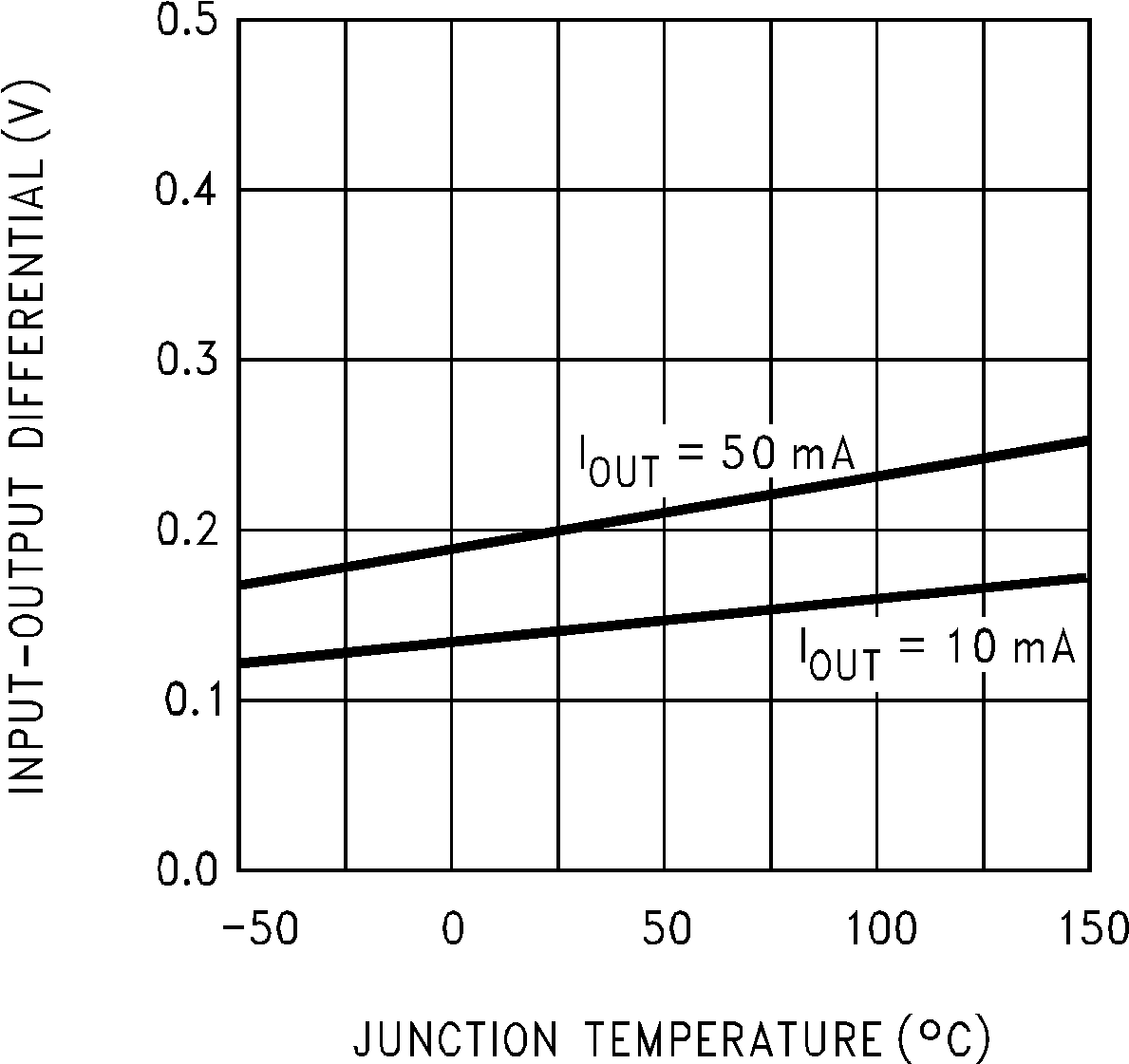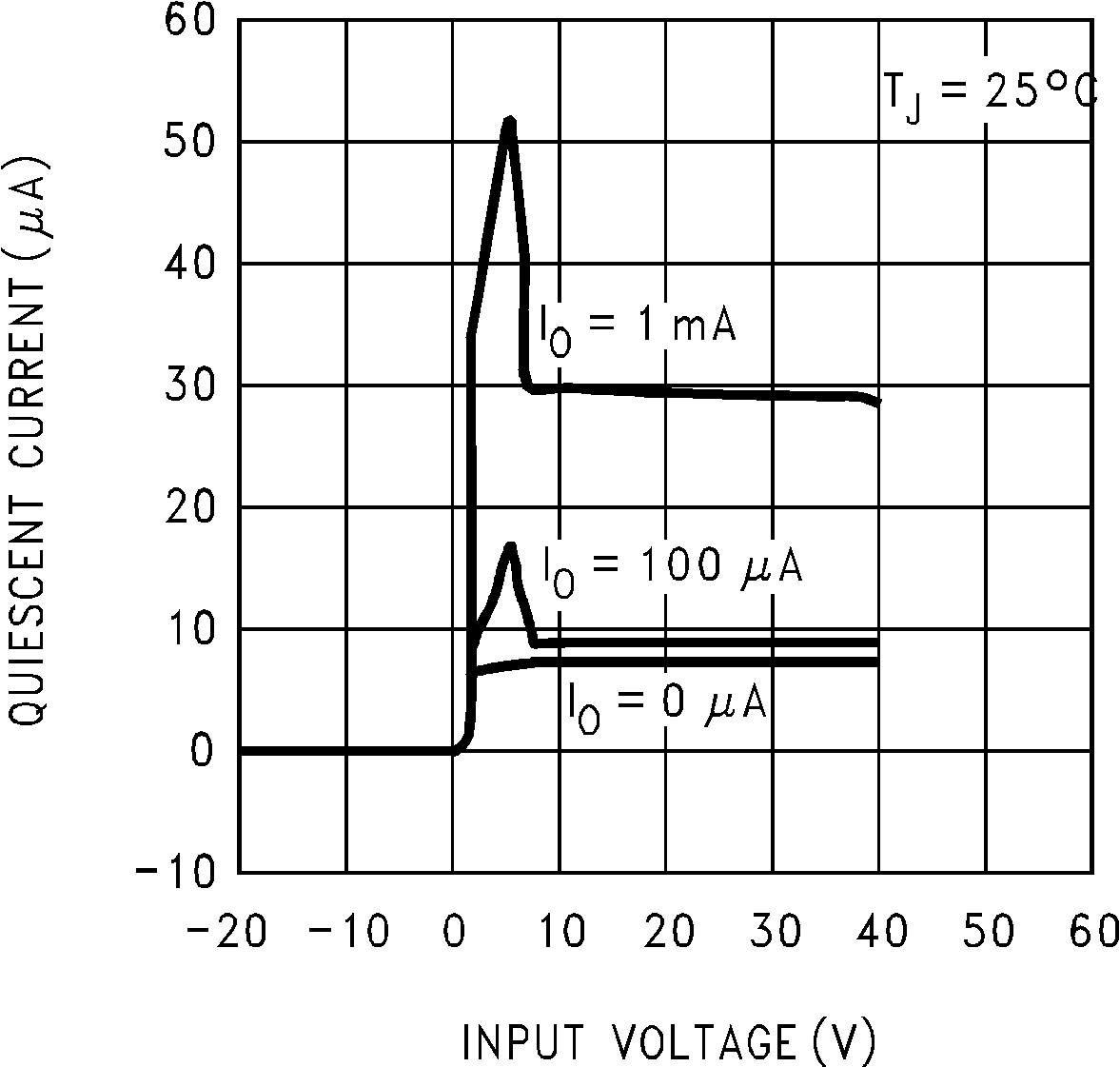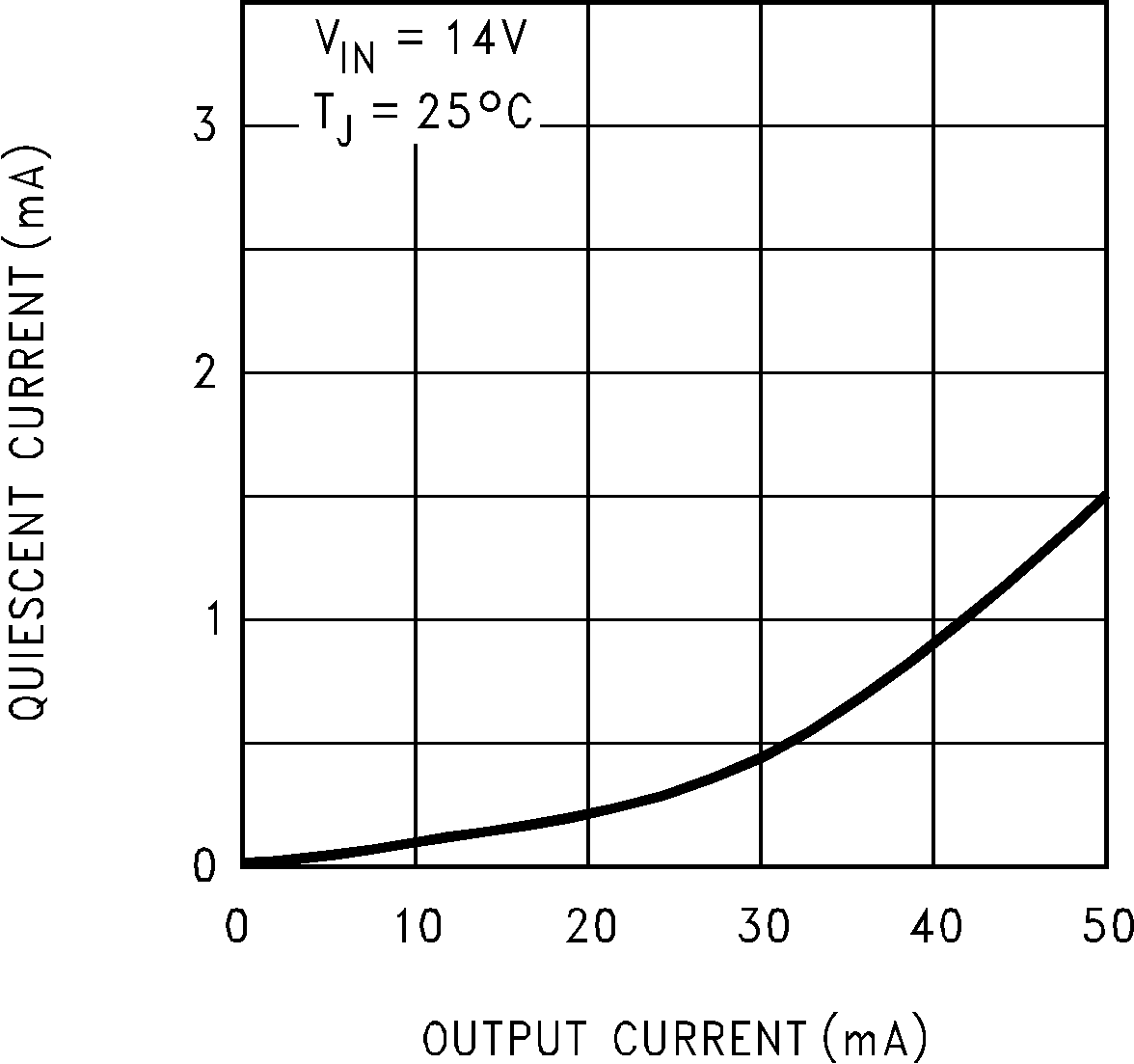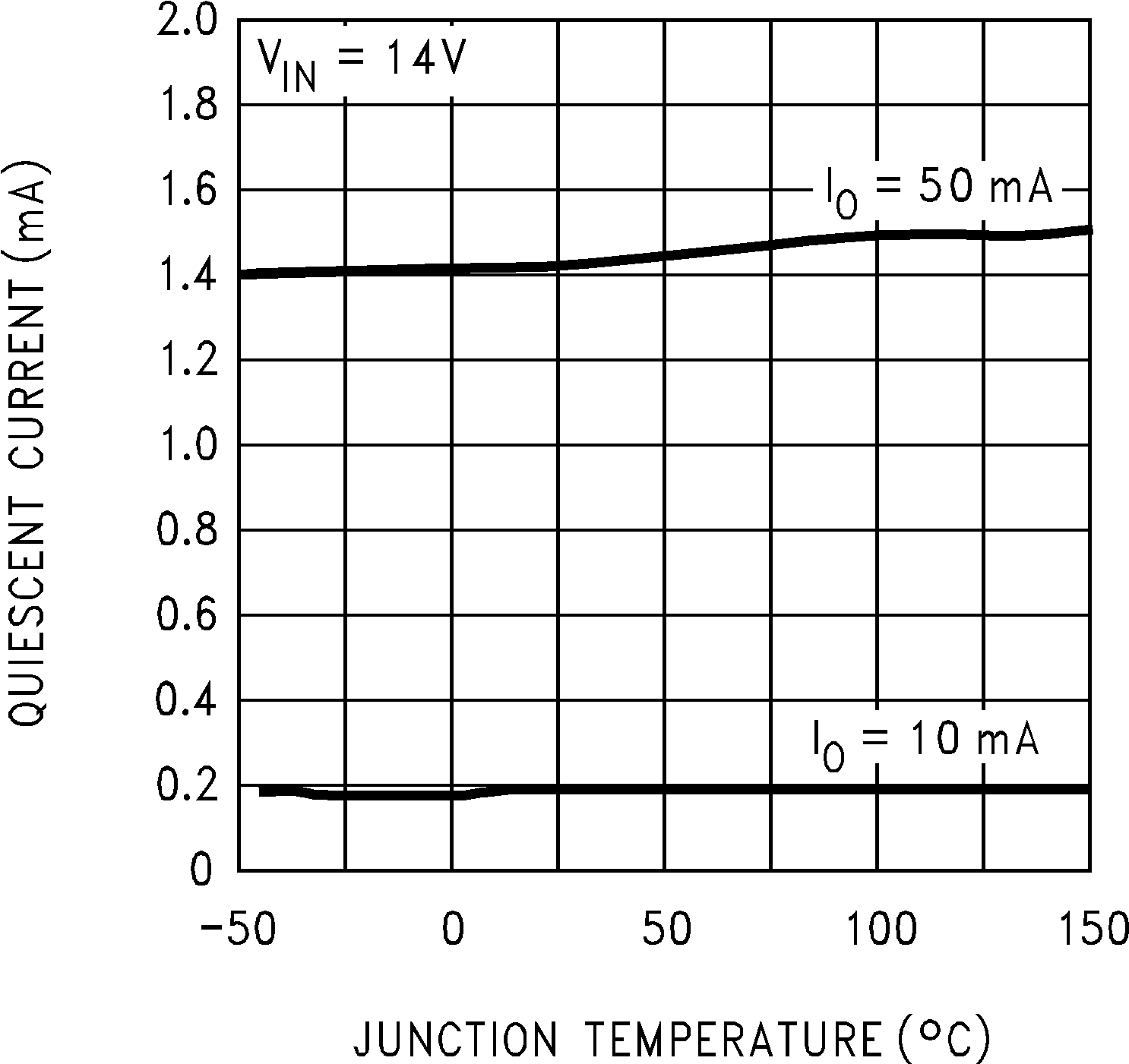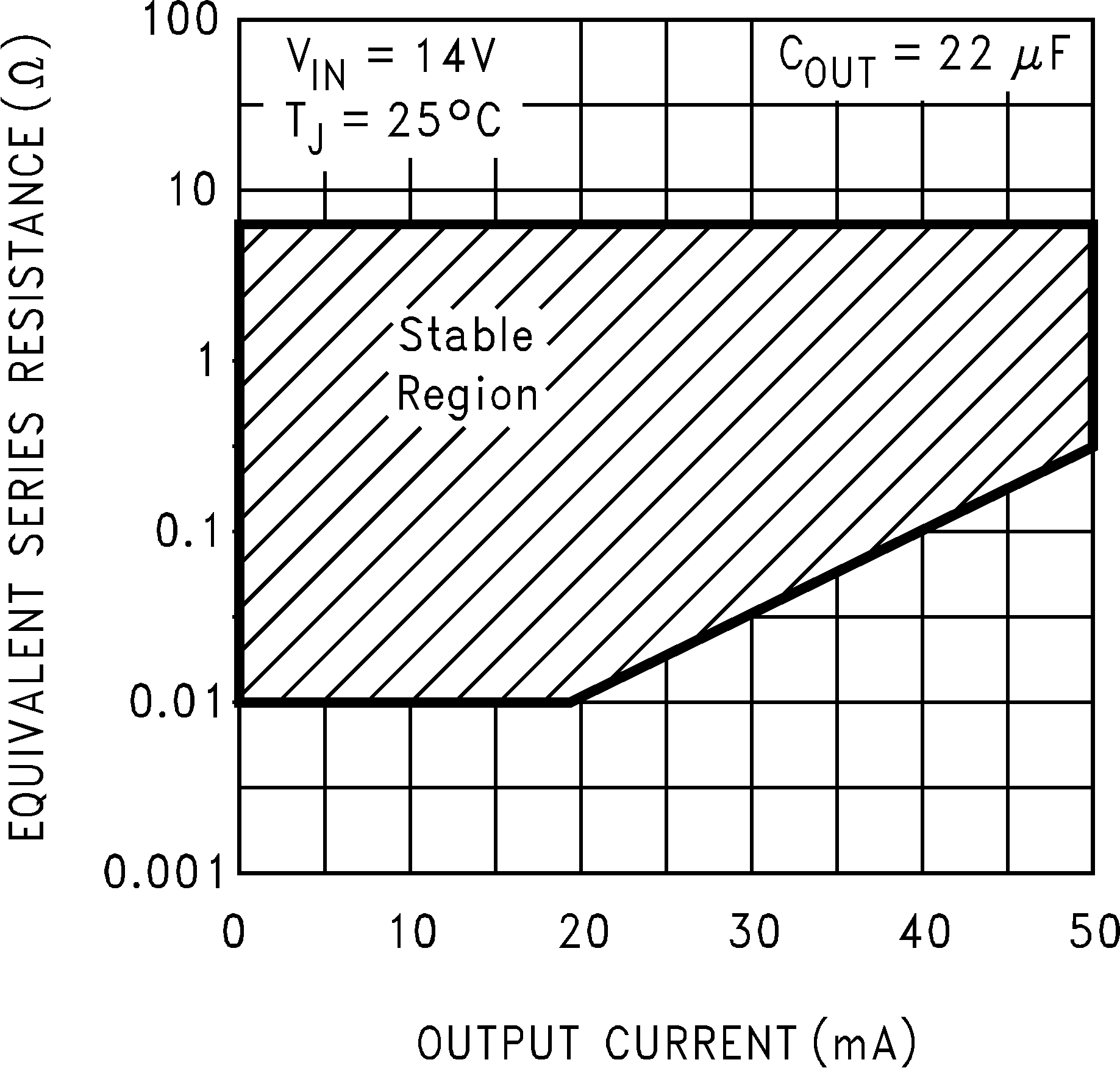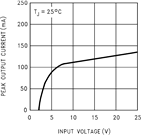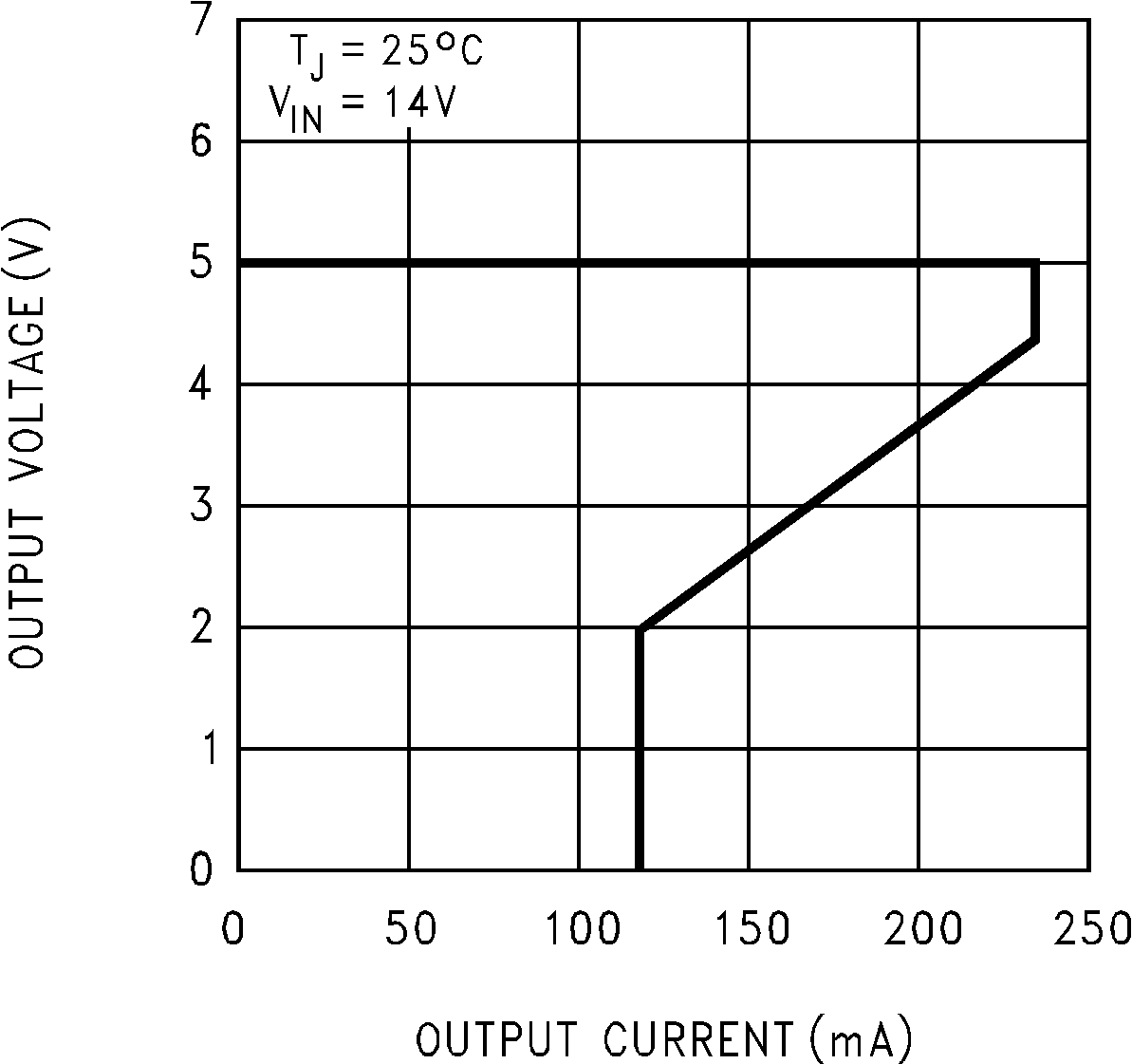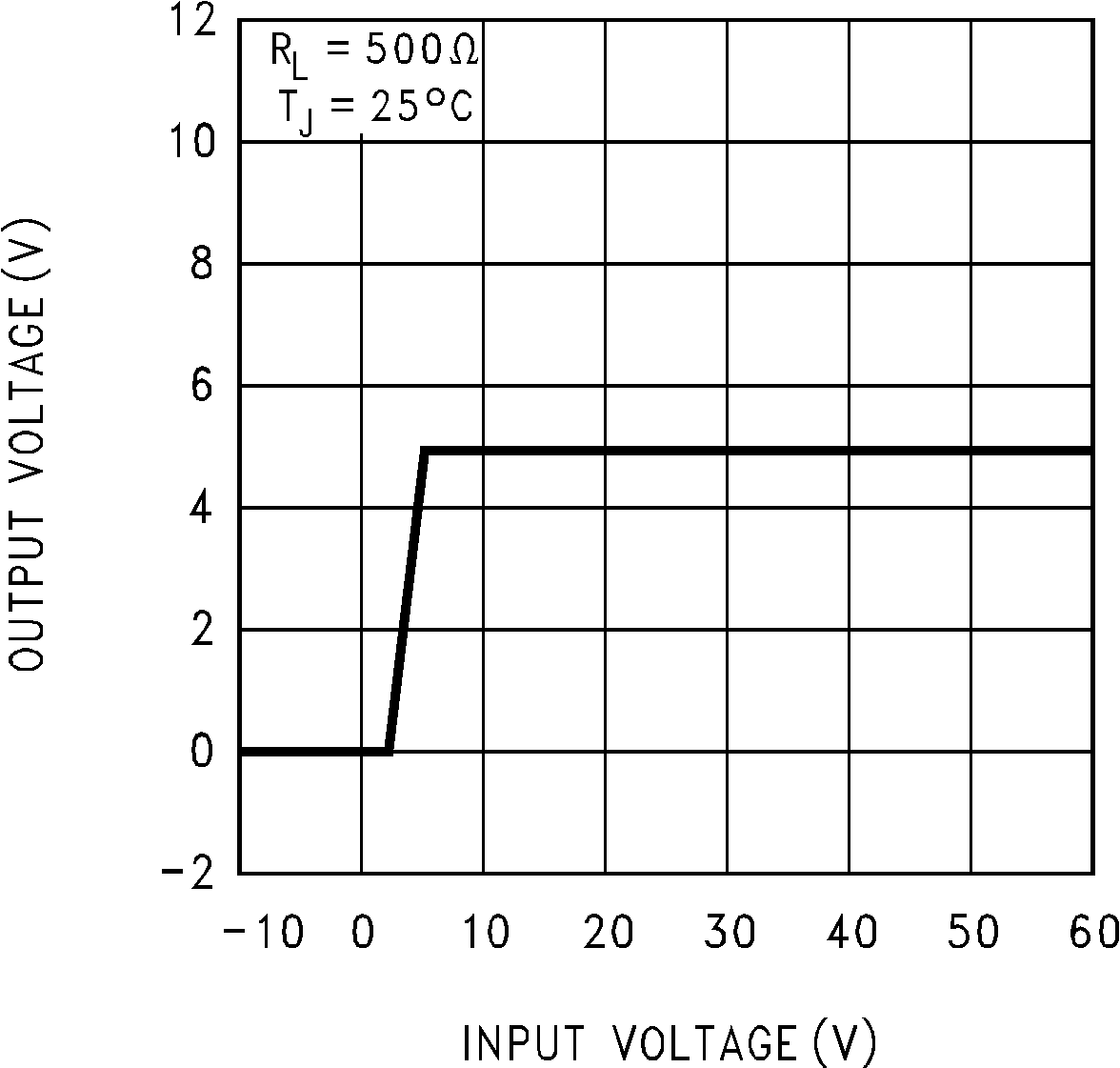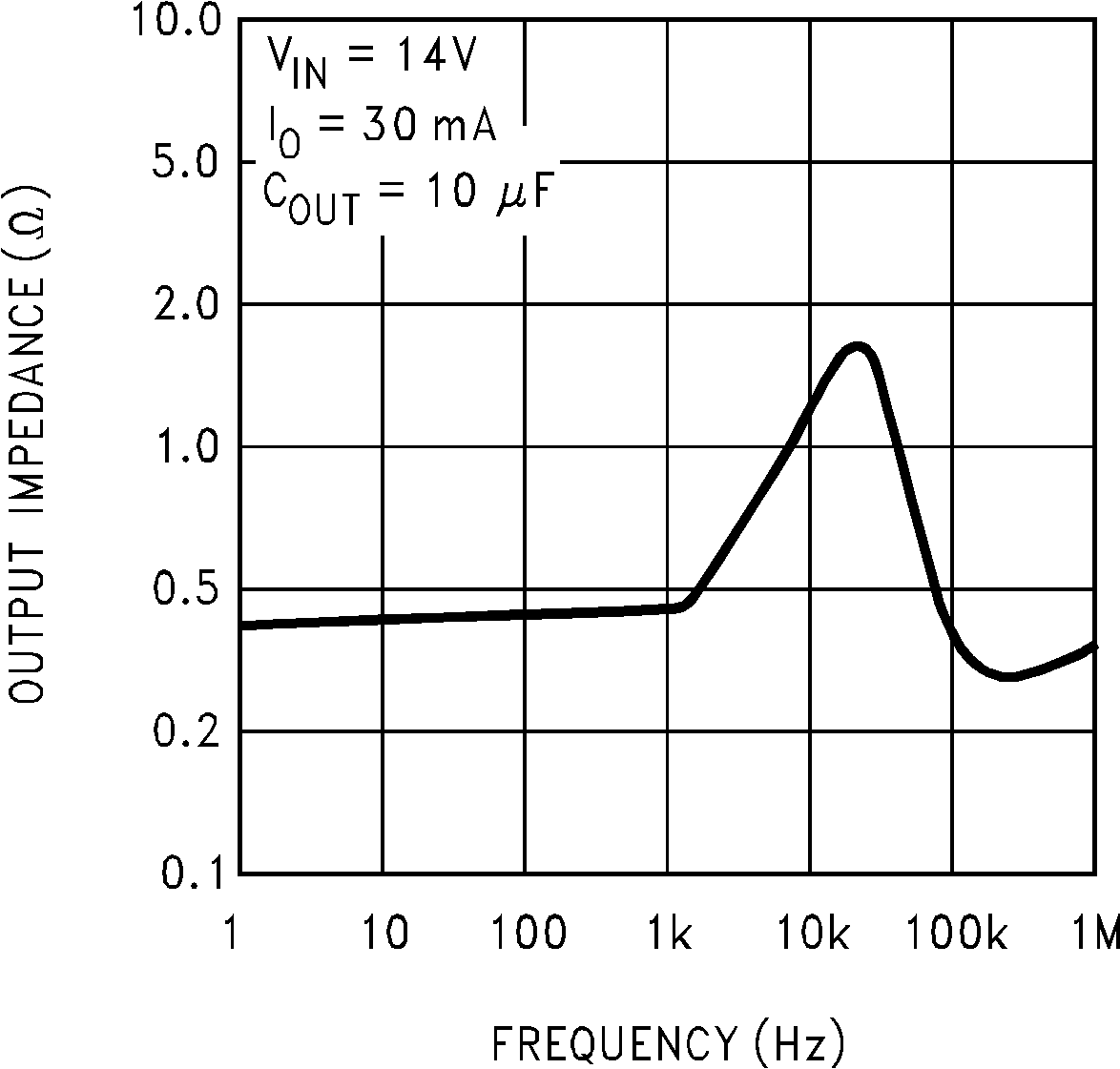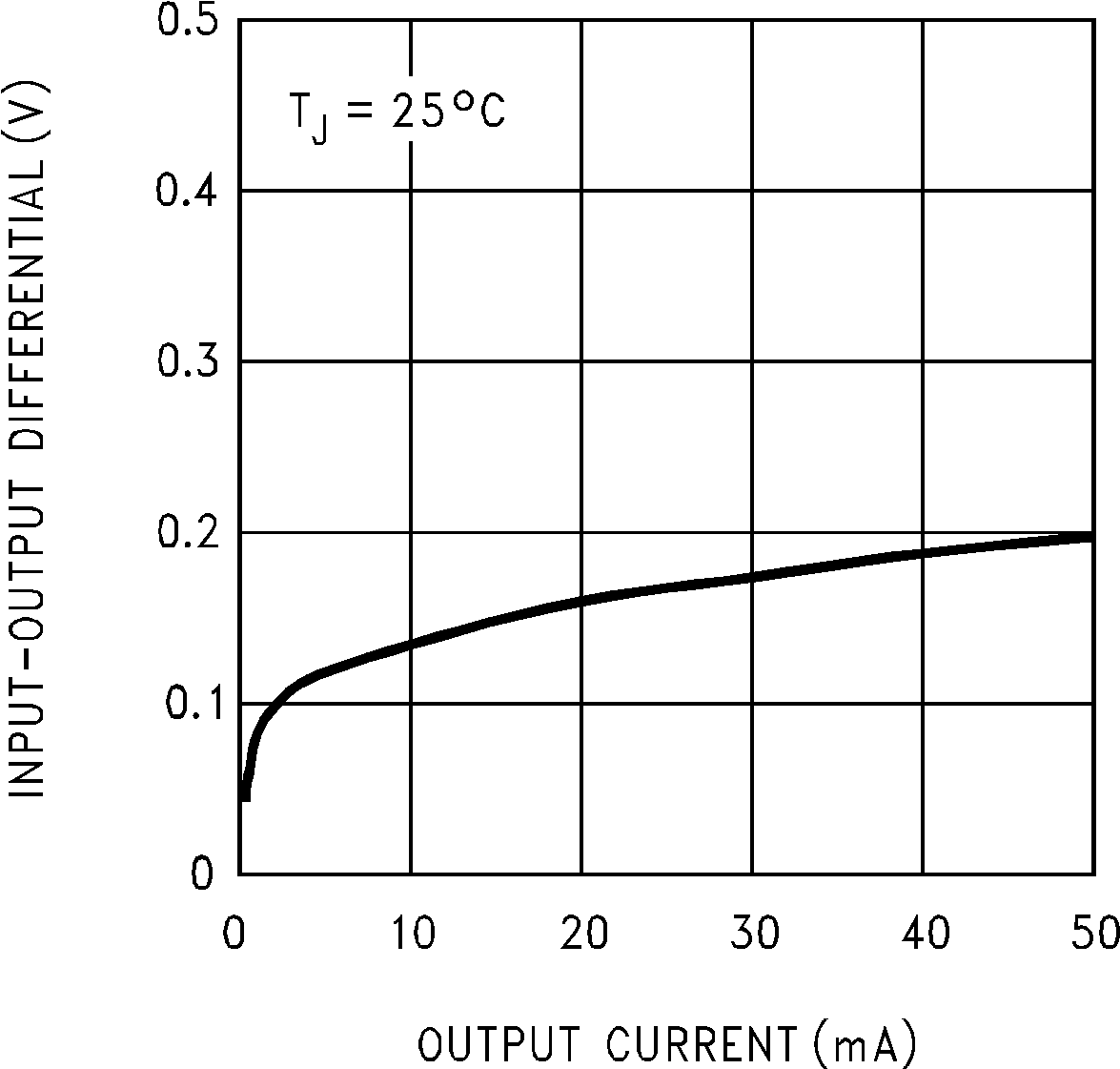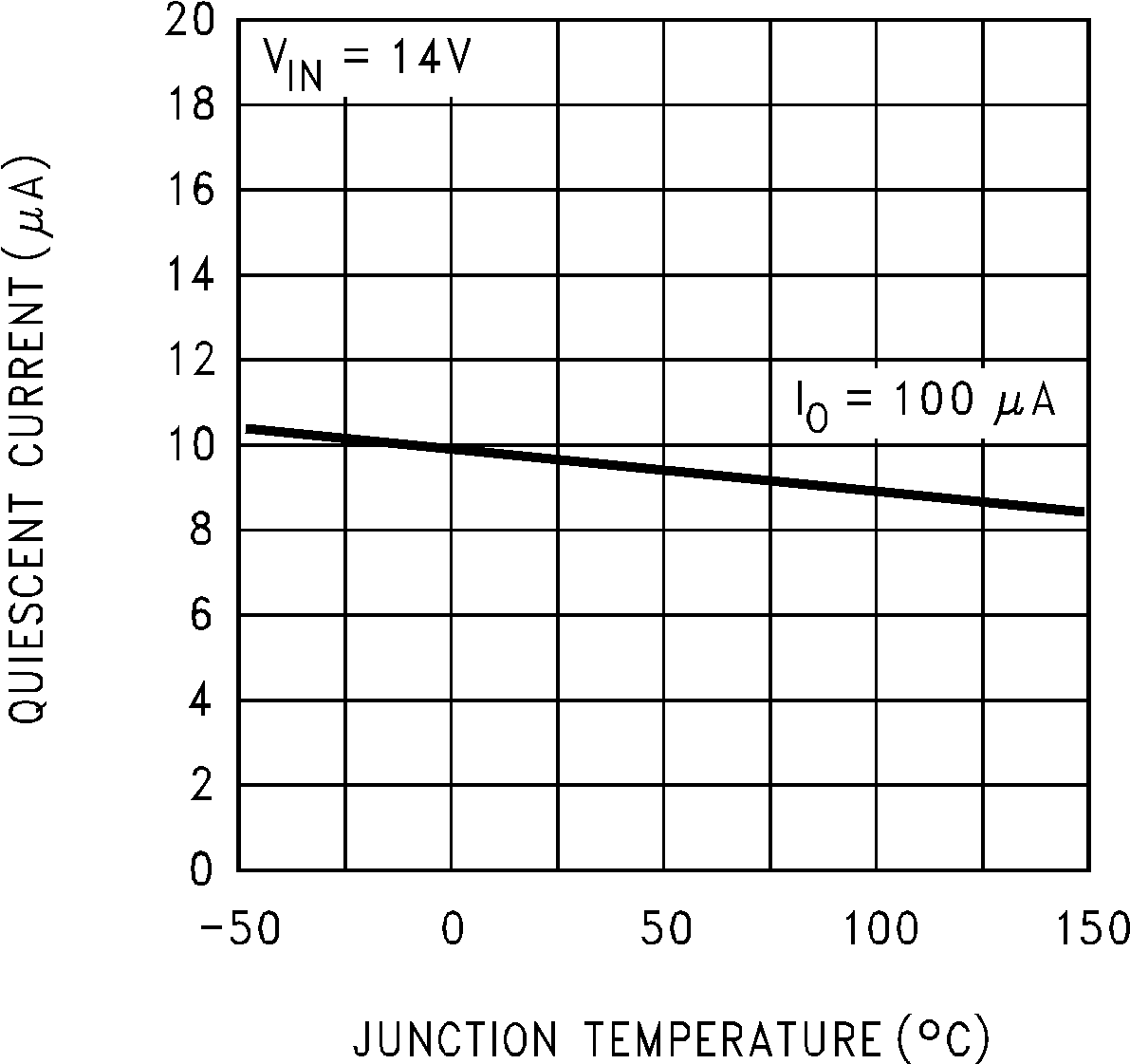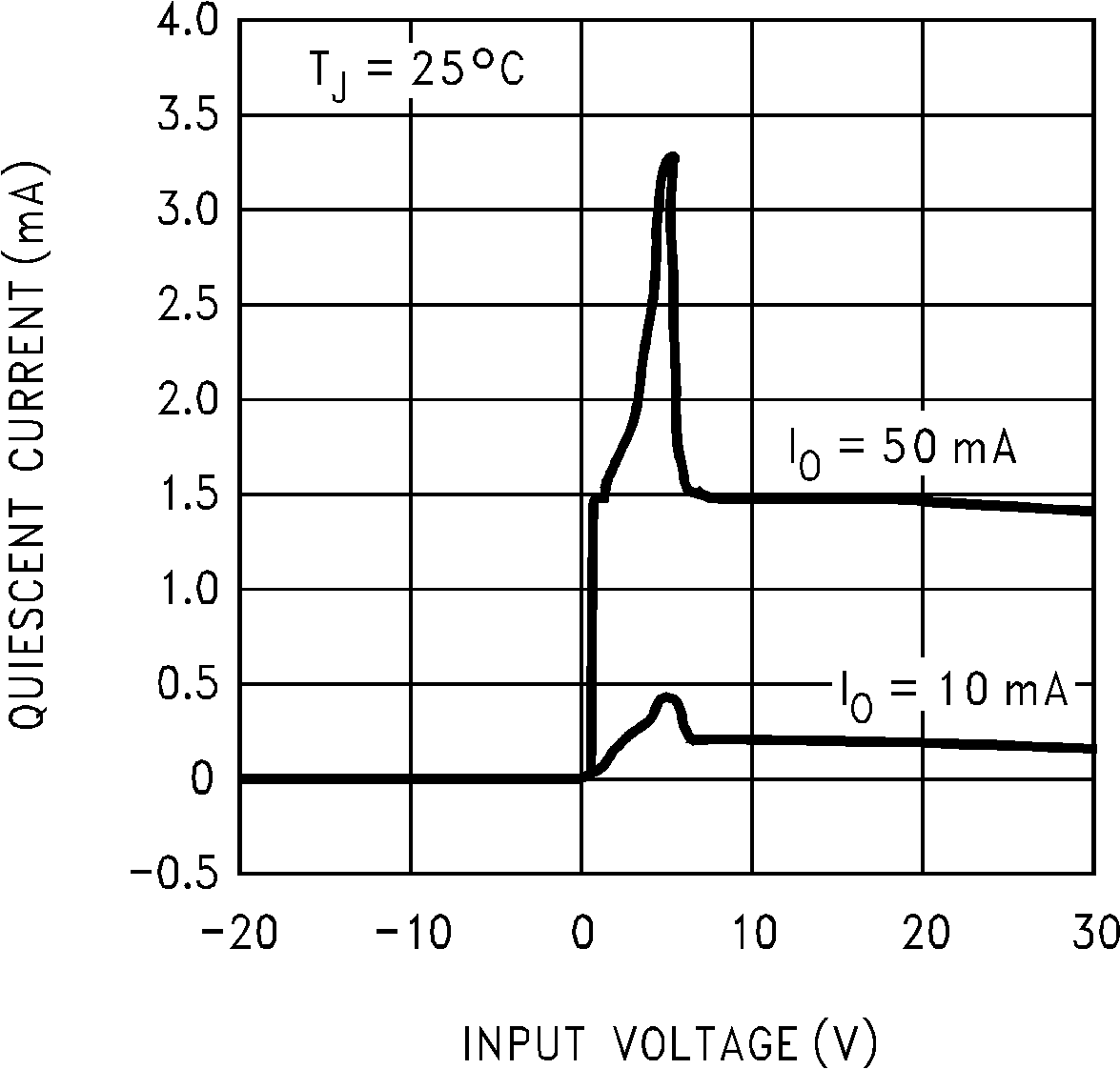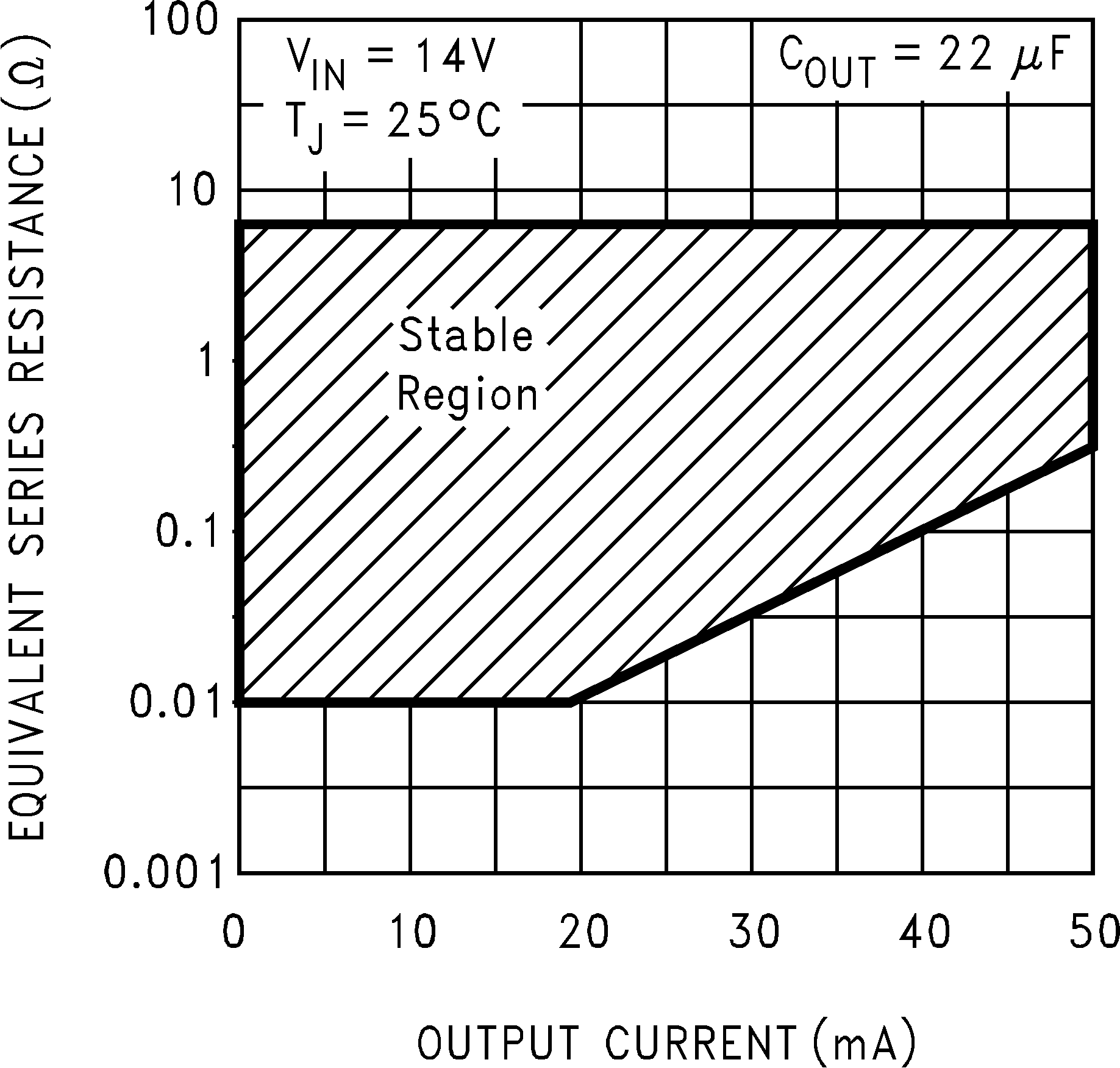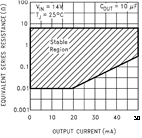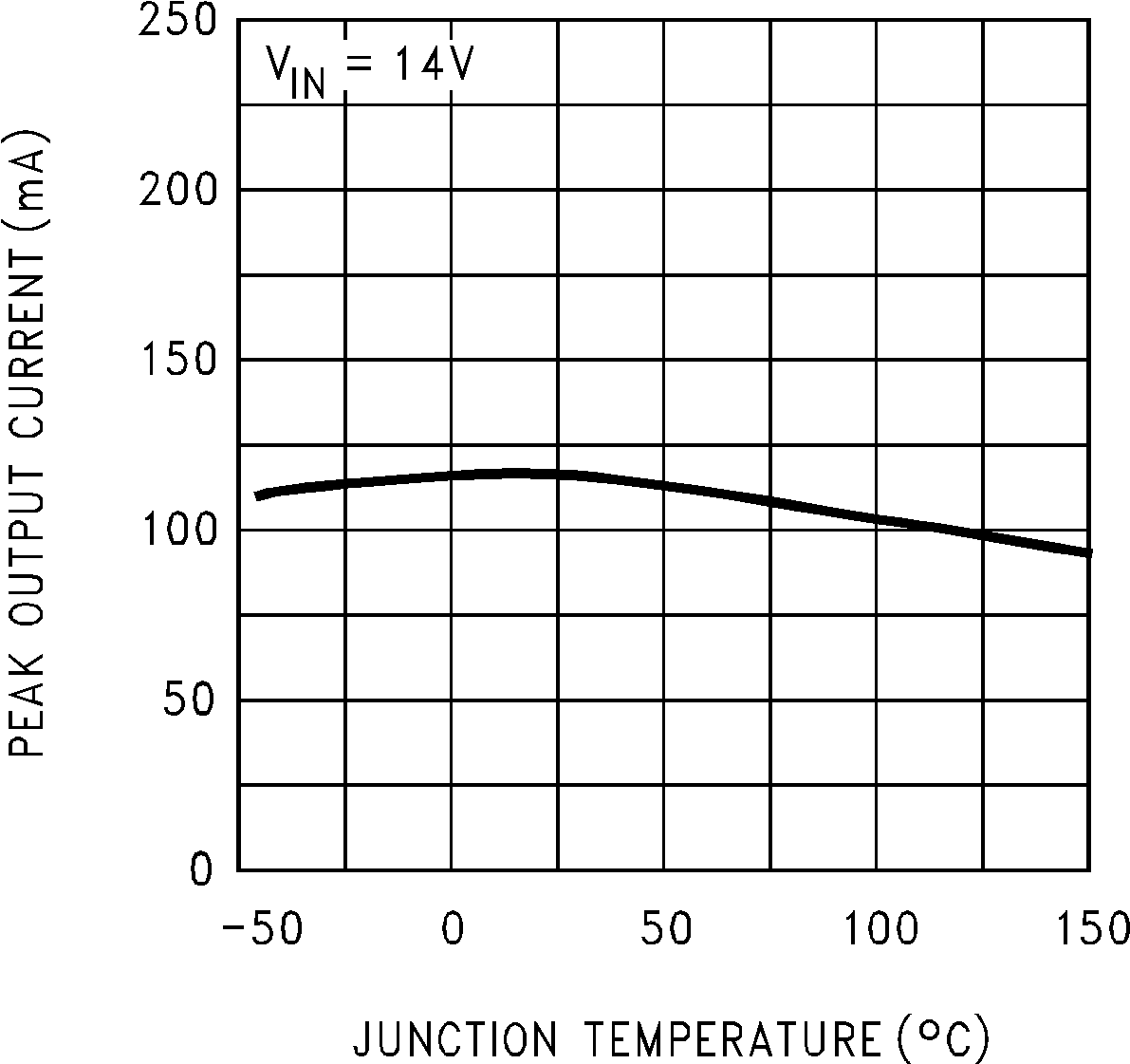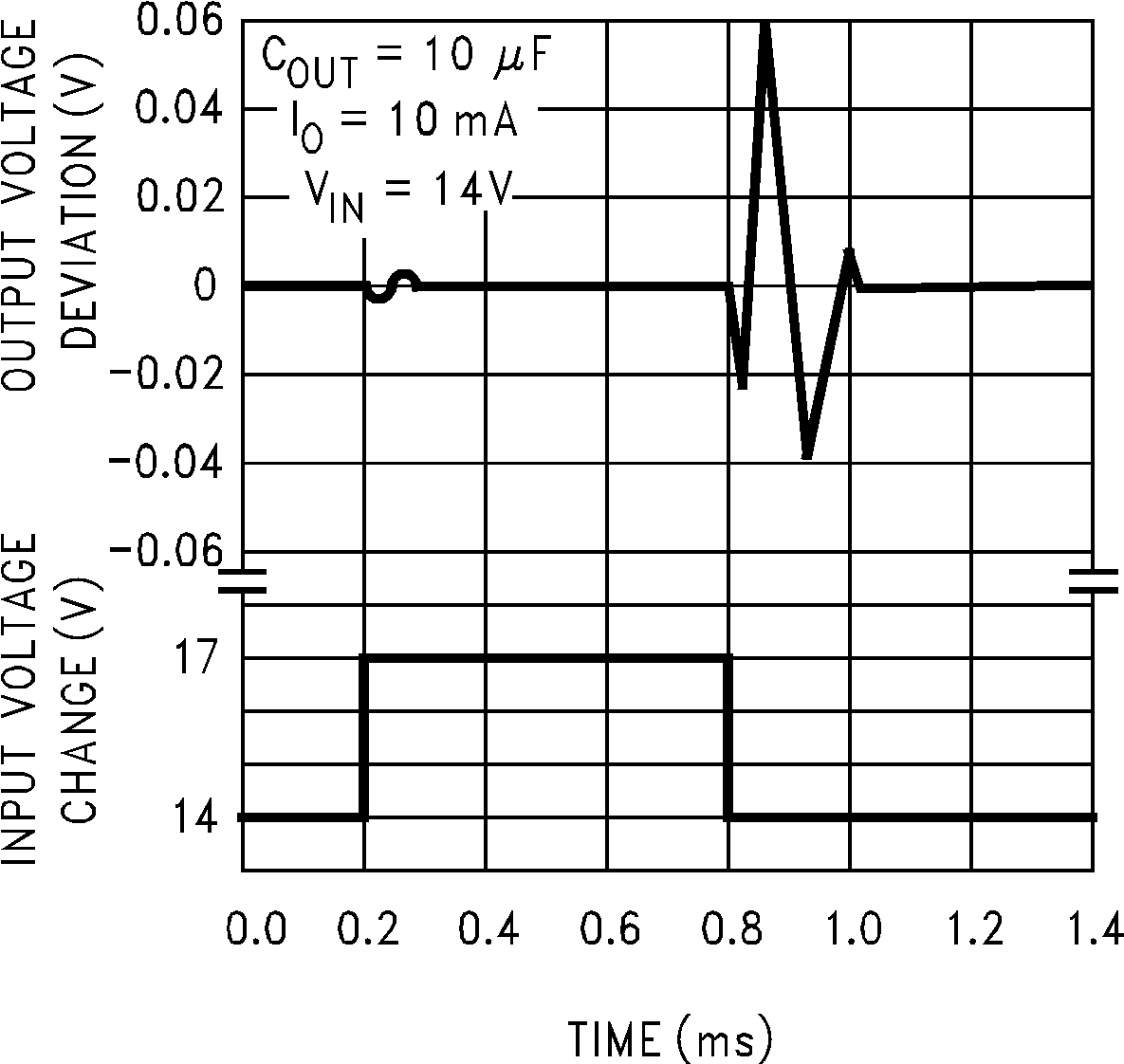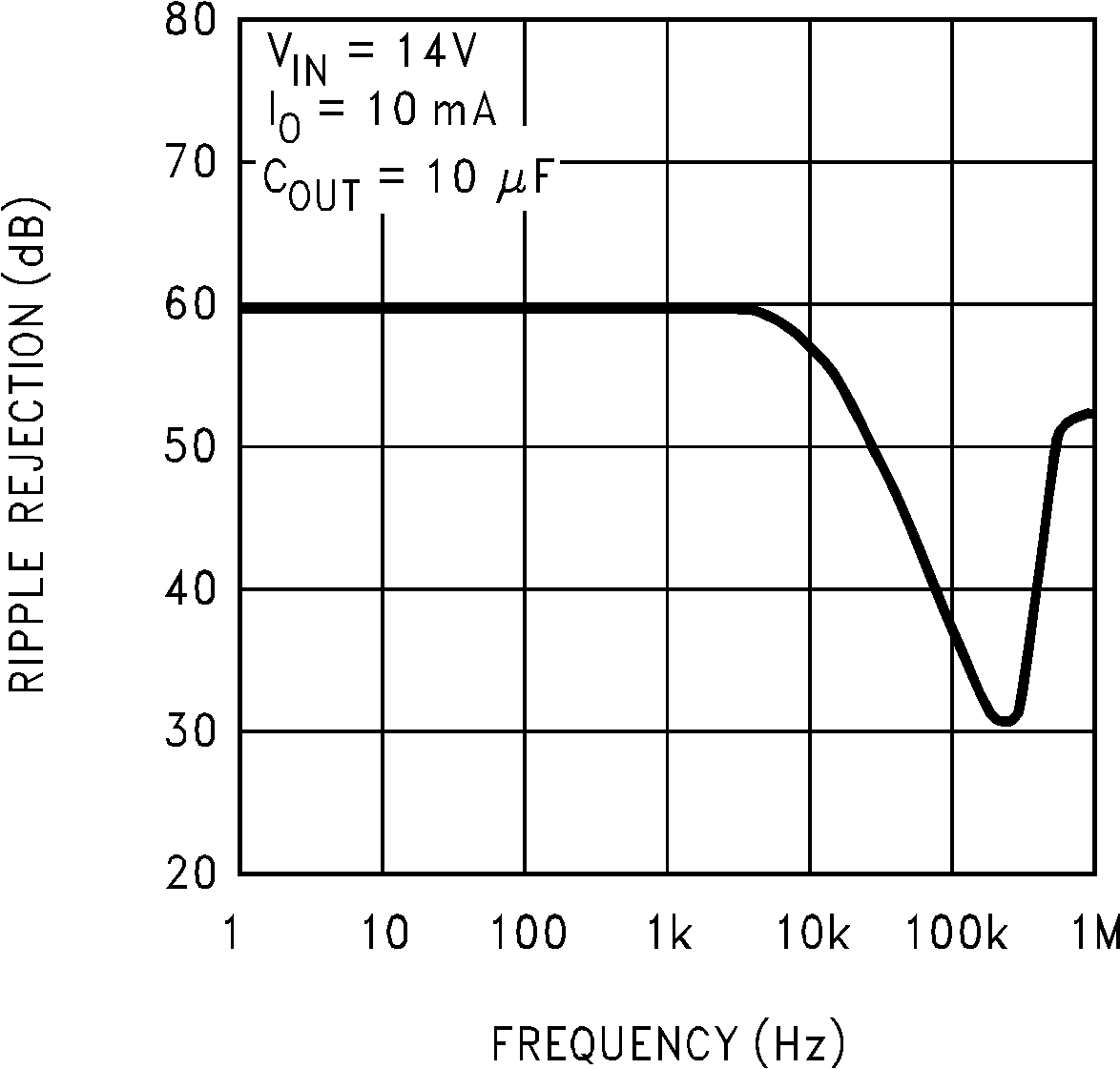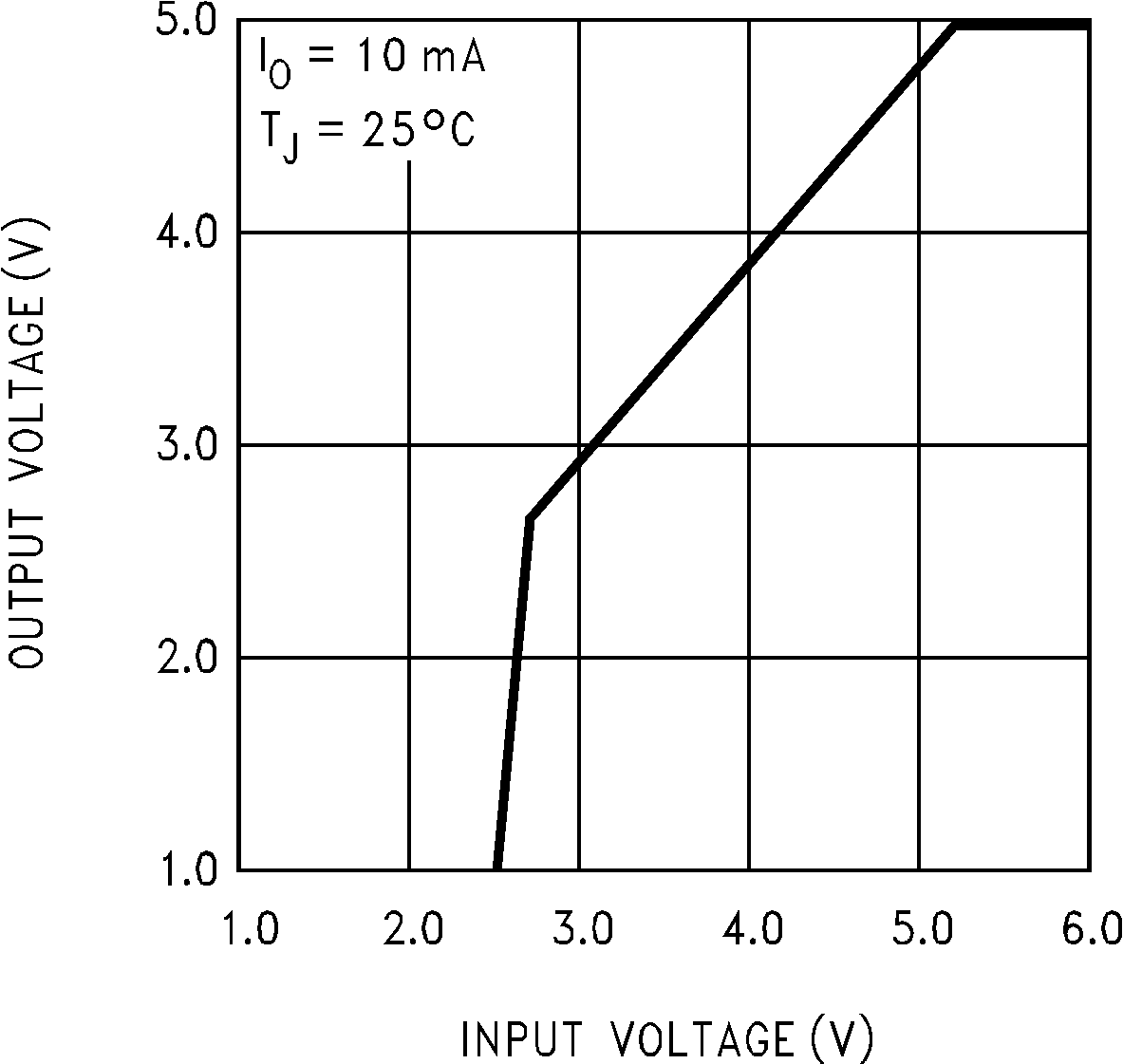SNVS684D November 2010 – March 2016
PRODUCTION DATA.
- 1 Features
- 2 Applications
- 3 Description
- 4 Revision History
- 5 Pin Configuration and Functions
- 6 Specifications
- 7 Detailed Description
- 8 Application and Implementation
- 9 Power Supply Recommendations
- 10Layout
- 11Device and Documentation Support
- 12Mechanical, Packaging, and Orderable Information
Package Options
Mechanical Data (Package|Pins)
Thermal pad, mechanical data (Package|Pins)
- DCY|4
Orderable Information
6 Specifications
6.1 Absolute Maximum Ratings
over operating free-air temperature range (unless otherwise noted)(1)(2)| MIN | MAX | UNIT | |
|---|---|---|---|
| Input voltage (survival) | −50 | 60 | V |
| Power dissipation(3) | Internally limited | ||
| Junction temperature, TJMAX | 150 | °C | |
| Storage temperature, Tstg | −65 | 150 | |
(1) Stresses beyond those listed under Absolute Maximum Ratings may cause permanent damage to the device. These are stress ratings only, which do not imply functional operation of the device at these or any other conditions beyond those indicated under Recommended Operating Conditions. Exposure to absolute-maximum-rated conditions for extended periods may affect device reliability.
(2) If Military/Aerospace specified devices are required, contact the TI Sales Office/ Distributors for availability and specifications.
(3) The maximum power dissipation is a function of TJ(MAX), RθJA, and TA. The maximum allowable power dissipation at any ambient temperature is PD = (TJ(MAX) − TA) / RθJA. If this dissipation is exceeded, the die temperature can rise above the TJ(MAX) of 150°C, and the LM2936Q may go into thermal shutdown.
6.2 ESD Ratings
| VALUE | UNIT | |||
|---|---|---|---|---|
| V(ESD) | Electrostatic discharge | Human-body model (HBM), per ANSI/ESDA/JEDEC JS-001(1) | ±2000 | V |
(1) JEDEC document JEP155 states that 500-V HBM allows safe manufacturing with a standard ESD control process. .
6.3 Recommended Operating Conditions
| MIN | MAX | UNIT | |
|---|---|---|---|
| Temperature, TJ | −40 | 125 | °C |
| Input voltage, VIN (LM2936Q) | 5.5 | 40 | V |
| Input voltage, VIN (LM2936QH only) | 5.5 | 60 | V |
| Shutdown pin voltage, VSD (LM2936QHBMA only) | 0 | 40 | V |
6.4 Thermal Information
| THERMAL METRIC(1) | LM2936Q | UNIT | ||||
|---|---|---|---|---|---|---|
| SOIC (D) |
TO-252 (NDP) |
VSSOP (DGK) |
SOT-223 (DCY) |
|||
| 8 PINS | 3 PINS | 8 PINS | 4 PINS | |||
| RθJA(2) | Junction-to-ambient thermal resistance, High-K | 111.4 | 50.5 | 173.4 | 62.8 | °C/W |
| RθJC(top) | Junction-to-case (top) thermal resistance | 56.3 | 52.6 | 65.9 | 44.2 | °C/W |
| RθJB | Junction-to-board thermal resistance | 51.9 | 29.7 | 94.9 | 11.7 | °C/W |
| ψJT | Junction-to-top characterization parameter | 10.9 | 4.8 | 9.6 | 3.6 | °C/W |
| ψJB | Junction-to-board characterization parameter | 51.4 | 29.3 | 93.3 | 11.6 | °C/W |
| RθJC(bot) | Junction-to-case (bottom) thermal resistance | n/a | 1.6 | n/a | n/a | °C/W |
(1) For more information about traditional and new thermal metrics, see the Semiconductor and IC Package Thermal Metrics application report, SPRA953.
(2) Thermal resistance value RθJA is based on the EIA/JEDEC High-K printed circuit board defined by: JESD51-7 - High Effective Thermal Conductivity Test Board for Leaded Surface Mount Packages.
6.5 Electrical Characteristics for 3-V LM2936Q
VIN = 14 V, IOUT = 10 mA, TJ = 25°C, unless otherwise specified.| PARAMETER | TEST CONDITIONS | MIN(1) | TYP(2) | MAX(1) | UNIT |
|---|---|---|---|---|---|
| Output voltage | 2.94 | 3 | 3.06 | V | |
| 4 V ≤ VIN ≤ 26 V, 100 µA ≤ IOUT ≤ 50 mA(2) –40°C ≤ TJ ≤ 125°C | 2.91 | 3.000 | 3.09 | ||
| Quiescent current | IOUT = 100 μA, 8 V ≤ VIN ≤ 24 V | 15 | 20 | μA | |
| IOUT = 10 mA, 8 V ≤ VIN ≤ 24 V | 0.2 | 0.5 | mA | ||
| IOUT = 50 mA, 8 V ≤ VIN ≤ 24 V | 1.5 | 2.5 | mA | ||
| Line regulation | 9 V ≤ VIN ≤ 16 V | 5 | 10 | mV | |
| 6 V ≤ VIN ≤ 40 V, IOUT = 1 mA | 10 | 30 | |||
| Load regulation | 100 μA ≤ IOUT ≤ 5 mA | 10 | 30 | mV | |
| 5 mA ≤ IOUT ≤ 50 mA | 10 | 30 | |||
| Dropout voltage | IOUT = 100 μA | 0.05 | 0.1 | V | |
| IOUT = 50 mA | 0.20 | 0.40 | V | ||
| Short-circuit current | VOUT = 0 V | 65 | 120 | 250 | mA |
| Output impedance | IOUT = 30 mAdc and 10 mArms, ƒ = 1000 Hz | 450 | mΩ | ||
| Output noise voltage | 10 Hz–100 kHz | 500 | μV | ||
| Long-term stability | 20 | mV/1000 Hr | |||
| Ripple rejection | Vripple = 1 Vrms, ƒripple = 120 Hz | −40 | −60 | dB | |
| Reverse polarity transient input voltage | RL = 500 Ω, t = 1 ms | −50 | −80 | V | |
| Output voltage with reverse polarity input | VIN = −15 V, RL = 500 Ω | 0 | −0.3 | V | |
| Maximum line transient | RL = 500 Ω, VOUT ≤ 3.3 V, T = 40 ms | 60 | V | ||
| Output bypass capacitance (COUT) ESR |
COUT = 22 µF, 0.1 mA ≤ IOUT ≤ 50 mA | 0.3 | 8 | Ω |
(1) Datasheet minimum and max specification limits are ensured by design, test, or statistical analysis.
(2) Typical limits are at 25°C (unless otherwise specified) and represent the most likely parametric norm.
6.6 Electrical Characteristics for 3.3-V LM2936Q
VIN = 14 V, IOUT = 10 mA, TJ = 25°C, unless otherwise specified.| PARAMETER | TEST CONDITIONS | MIN(1) | TYP(2) | MAX(1) | UNIT |
|---|---|---|---|---|---|
| Output voltage | 3.234 | 3.300 | 3.366 | V | |
| 4 V ≤ VIN ≤ 26 V, 100 µA ≤ IOUT ≤ 50 mA(3) –40°C ≤ TJ ≤ 125°C | 3.201 | 3.300 | 3.399 | ||
| Quiescent current | IOUT = 100 μA, 8 V ≤ VIN ≤ 24 V | 15 | 20 | μA | |
| IOUT = 10 mA, 8 V ≤ VIN ≤ 24 V | 0.2 | 0.5 | mA | ||
| IOUT = 50 mA, 8 V ≤ VIN ≤ 24 V | 1.5 | 2.5 | mA | ||
| Line regulation | 9 V ≤ VIN ≤ 16 V | 5 | 10 | mV | |
| 6 V ≤ VIN ≤ 40 V, IOUT = 1 mA | 10 | 30 | |||
| Load regulation | 100 μA ≤ IOUT ≤ 5 mA | 10 | 30 | mV | |
| 5 mA ≤ IOUT ≤ 50 mA | 10 | 30 | |||
| Dropout voltage | IOUT = 100 μA | 0.05 | 0.10 | V | |
| IOUT = 50 mA | 0.2 | 0.4 | V | ||
| Short-circuit current | VOUT = 0 V | 65 | 120 | 250 | mA |
| Output impedance | IOUT = 30 mAdc and 10 mArms, ƒ = 1000 Hz | 450 | mΩ | ||
| Output noise voltage | 10 Hz–100 kHz | 500 | μV | ||
| Long-term stability | 20 | mV/1000 Hr | |||
| Ripple rejection | Vripple = 1 Vrms, ƒripple = 120 Hz | −40 | −60 | dB | |
| Reverse polarity transient input voltage | RL = 500 Ω, T = 1 ms | −50 | −80 | V | |
| Output voltage with reverse polarity input | VIN = −15 V, RL = 500 Ω | 0 | −0.3 | V | |
| Maximum line transient | RL = 500 Ω, VOUT ≤ 3.63 V, T = 40 ms | 60 | V | ||
| Output bypass capacitance (COUT) ESR |
COUT = 22 µF, 0.1 mA ≤ IOUT ≤ 50 mA | 0.3 | 8 | Ω |
(1) Datasheet minimum and maximum specification limits are ensured by design, test, or statistical analysis.
(2) Typical limits are at 25°C (unless otherwise specified) and represent the most likely parametric norm.
(3) To ensure constant junction temperature, pulse testing is used.
6.7 Electrical Characteristics for 5-V LM2936Q
VIN = 14 V, IOUT = 10 mA, TJ = 25°C, unless otherwise specified.| PARAMETER | TEST CONDITIONS | MIN(1) | TYP(2) | MAX(1) | UNIT |
|---|---|---|---|---|---|
| 5-V LM2936QHBMA ONLY | |||||
| Output voltage | 5.5 V ≤ VIN ≤ 48 V, 100 µA ≤ IOUT ≤ 50 mA(3) –40°C ≤ TJ ≤ 125°C | 4.85 | 5 | 5.15 | V |
| Line regulation | 6 V ≤ VIN ≤ 60 V, IOUT = 1 mA | 15 | 35 | mV | |
| ALL 5-V LM2936Q | |||||
| Output voltage | 4.9 | 5 | 5.1 | V | |
| 5.5 V ≤ VIN ≤ 26 V, 100 µA ≤ IOUT ≤ 50 mA(3) –40°C ≤ TJ ≤ 125°C | 4.85 | 5 | 5.15 | ||
| Quiescent current | IOUT = 100 μA, 8 V ≤ VIN ≤ 24 V | 9 | 15 | μA | |
| IOUT = 10 mA, 8 V ≤ VIN ≤ 24 V | 0.2 | 0.5 | mA | ||
| IOUT = 50 mA, 8 V ≤ VIN ≤ 24 V | 1.5 | 2.5 | mA | ||
| Line regulation | 9 V ≤ VIN ≤ 16 V | 5 | 10 | mV | |
| 6 V ≤ VIN ≤ 40 V, IOUT = 1 mA | 10 | 30 | |||
| Load regulation | 100 μA ≤ IOUT ≤ 5 mA | 10 | 30 | mV | |
| 5 mA ≤ IOUT ≤ 50 mA | 10 | 30 | |||
| Dropout voltage | IOUT = 100 μA | 0.05 | 0.1 | V | |
| IOUT = 50 mA | 0.2 | 0.4 | V | ||
| Short-circuit current | VOUT = 0 V | 65 | 120 | 250 | mA |
| Output impedance | IOUT = 30 mAdc and 10 mArms, ƒ = 1000 Hz | 450 | mΩ | ||
| Output noise voltage | 10 Hz–100 kHz | 500 | μV | ||
| Long-term stability | 20 | mV/1000 Hr | |||
| Ripple rejection | Vripple = 1 Vrms, ƒripple = 120 Hz | −40 | −60 | dB | |
| Reverse polarity transient input voltage | RL = 500 Ω, T = 1 ms | −50 | −80 | V | |
| Output voltage with reverse polarity input | VIN = −15 V, RL = 500 Ω | 0 | −0.3 | V | |
| Maximum line transient | RL = 500 Ω, VOUT ≤ 5.5 V, T = 40 ms | 60 | V | ||
| Output bypass capacitance (COUT) ESR | COUT = 10 µF, 0.1 mA ≤ IOUT ≤ 50 mA | 0.3 | 8 | Ω | |
| SHUTDOWN INPUT: 5-V LM2936QHBMA ONLY | |||||
| Output voltage, VOUT | Output off, VSD = 2.4 V, RLOAD = 500 Ω | 0 | 0.01 | V | |
| Shutdown high threshold voltage, VIH | Output off, RLOAD = 500 Ω | 2 | 1.1 | V | |
| Shutdown low threshold voltage, VIL |
Output on, RLOAD = 500 Ω | 1.1 | 0.6 | V | |
| Shutdown high current, IIH |
Output off, VSD = 2.4 V, RLOAD = 500 Ω | 12 | μA | ||
| Quiescent current | Output off, VSD = 2.4 V, RLOAD = 500Ω, includes IIH current | 30 | μA | ||
(1) Datasheet minimum and maximum specification limits are ensured by design, test, or statistical analysis.
(2) Typical limits are at 25°C (unless otherwise specified) and represent the most likely parametric norm.
(3) To ensure constant junction temperature, pulse testing is used.
6.8 Typical Characteristics
